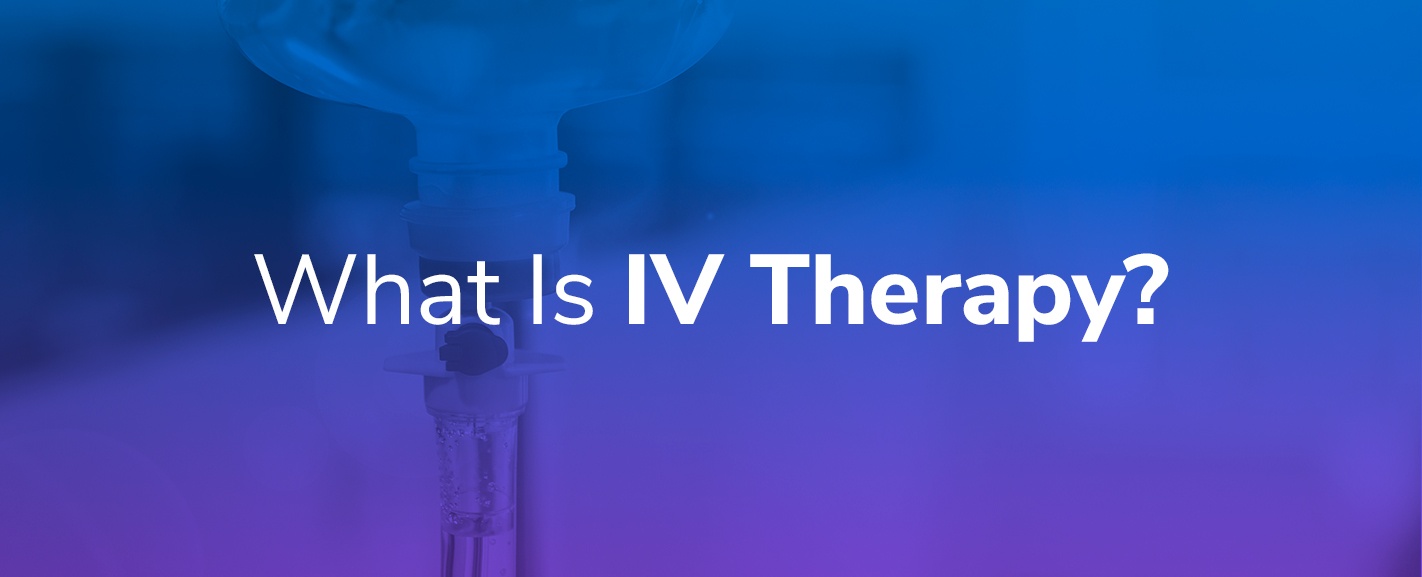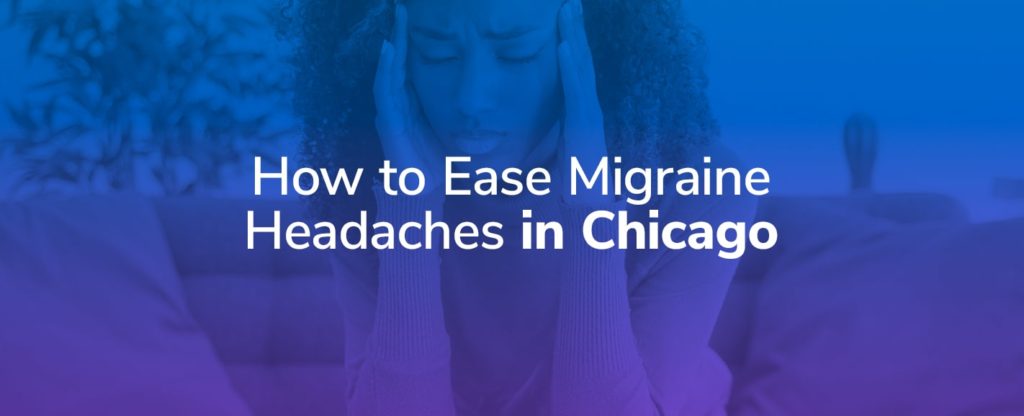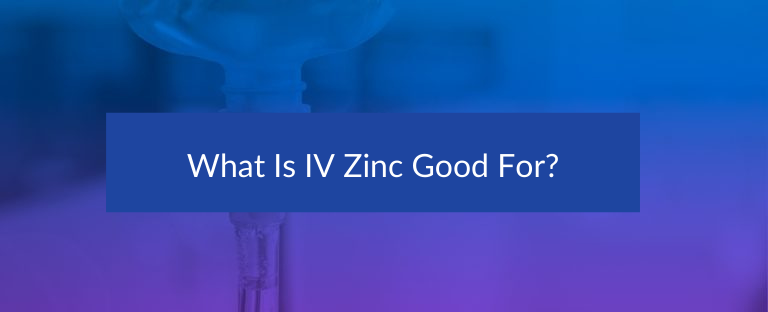Mobile IV Medics offers intravenous (IV) therapy services around the United States. Our team of registered nurses will travel to you and administer one of our IV packages in your home, office, or hotel — anywhere you’re most comfortable.
- What Is IV Therapy?
- How Does IV Therapy Work?
- What’s In An IV Bag?
- What Are The Benefits of IV Therapy?
- What is IV Therapy Used For?
- How Long Does IV Therapy Take?
- How Quickly Will You Feel The Effects of the IV Drip?
- How Much Does IV Therapy Cost?
What Is IV Therapy?
IV hydration therapy is a method of inserting fluids directly into veins that often provides immediate hydration and relief for a range of conditions. Instead of requiring you to consume nutrients and medication through your digestive system, an intravenous approach delivers them straight to your bloodstream, allowing a higher concentration to reach your organs and tissue and start working faster.
How Does IV Therapy Work?
Mobile IV Medics uses IV drip infusions for our IV therapy. Our setup involves a bag of fluids filled with nutrients to meet your needs hung on a pole. Connected to the bag are a catheter and needle to deliver the fluids to your bloodstream. Typically, we insert the needle into your elbow, wrist, or the back of your hand. Once the drip is situated, we can start the IV process, safely infusing the fluids into your body over a period of about an hour.
What Is An IV?
An Intravenous line, commonly known as an IV, is a medical procedure utilized for delivering fluids, nutrients, and medications directly into a patient’s vein. This flexible, soft tube is typically inserted into a vein in your arm or hand. The primary function of an IV is to provide a regulated introduction of substances into your bloodstream over a specific duration of time.
This method enables faster administration of treatment by allowing vital substances like water, medication, blood, or nutrients to reach the body quickly via the circulatory system. It’s worth noting that IV treatment is one of the most frequently used invasive procedures in healthcare settings.
What Fluids and Vitamins Are in an IV Infusion Bag?
The fluids inside an IV bag depend on the type of therapy you are undergoing. Intravenous solutions can contain saline, vitamins, minerals, and medication. Some common components of the IV fluids in bags include:
- Saline: Saline solution is usually the base ingredient in an intravenous drip bag. Saline, made up of water and sodium chloride, serves as a delivery system for the other components in your IV. Saline also helps hydrate the body.
- Dextrose: Dextrose is a type of sugar. Unlike some of your favorite sweet desserts, this kind of sugar is good for you. Dextrose helps normalize low levels of blood sugar. Because it is a sugar, your body can also convert dextrose into energy.
- Lactated Ringer’s: If you are a fan of medical dramas, you have almost certainly heard the term “Lactated Ringer’s.” This IV solution contains water, calcium chloride, potassium chloride, sodium chloride, and sodium lactate. Like saline solution, Lactated Ringer’s can deliver other ingredients. It is also commonly used during surgery and to treat dehydration.
- Vitamin B: Vitamins B-1, B-2, B-3, B-5, B-6, B-9, and B-12 are collectively known as vitamin B complex. Vitamin B complex directly contributes to important bodily functions, like metabolism and nerve function. Vitamin B complex is often delivered via IV vitamin therapy for patients who have trouble naturally absorbing vitamins.
- Vitamin C: Vitamin C is important for a healthy immune system function. If you are sick or feel like you are becoming sick, vitamin C can be a beneficial ingredient. Vitamin C sustains the immune system’s pathogen response, helping it fight diseases and prevent them from onsetting.
- Calcium: Your IV may include calcium, which is a mineral that we need to build strong bones and teeth. We consume calcium in our diet through foods like dairy and green, leafy vegetables. Intravenous calcium can supplement a low-calcium diet or treat certain conditions like acute hypocalcemia and hypoparathyroidism.
- Magnesium: Magnesium is a mineral that plays a role in healthy metabolic function. It has numerous benefits, including reducing inflammation, combating leg cramps in pregnant women, and even helping to prevent migraines.
- Antioxidants: Antioxidants help protect your body’s cells from a number of different diseases. Your treatment may include different types of antioxidants, such as glutathione, or vitamins A, C, or E.
- Antibiotics: A patient will likely receive antibiotics via an IV bag in cases of respiratory infection, bacterial skin infection, gastrointestinal infection, meningitis, Lyme disease, and more. Common IV antibiotics include penicillins, oxazolidinones, cephalosporins, glycopeptides, fluoroquinolones, carbapenems, and nitroimidazoles.
IV Therapy Benefits
Doctors, medical professionals, and scientists are discovering new benefits every day. Some of the reasons you may want to consider Mobile IV Medics include:
1. Energy Management
IV therapies often include essential amino acids. These amino acids function similarly to caffeine, and you can get them intravenously without the added boost (and eventual crash) from the sugar in coffee and sodas.
2. Weight Loss
If you’re trying to lose weight, the best way to do so is to make sure you have the energy and nutrients to get in a good workout and cool down once it’s over. Weight loss drips can be your secret weapon for getting in shape.
3. Hangover Treatment
One of our most popular drip packages is designed to treat headaches and other hangover symptoms after a great night out. Avoid the discomfort of a hangover and get back to doing what you need to feel refreshed.
4. Nutrient Deficiency Treatment
IV therapy can be beneficial for restoring certain nutrient levels if you have trouble maintaining them. People with Crohn’s disease, short bowel syndrome, cystic fibrosis, and similar conditions have found relief by using IVs
5. Free Radicals Cleansing
Simply going outside can introduce your body to free radicals — agents that promote signs of aging and can even change your DNA. Infusions of antioxidants like vitamin C can help your body flush these and other toxins out of your system.
While the main benefits of your IV fluids will ultimately depend on which drip package you choose, you can always add booster shots to ensure you’re targeting areas where you want to see more improvement.
Common Uses of Intravenous Therapy
So, what is IV therapy used for? Generally, the main types are:
- Hangover relief: After overindulging during a night out, you might wake up feeling awful. A dry mouth, pounding headache, upset digestive system, and desire to keep the shades drawn are all telltale signs of a hangover. A bad hangover can make it hard to concentrate and ruin your entire day. IV therapy is an effective way to find relief that replaces the last-ditch efforts of chugging a glass of water or a cup of coffee with an over-the-counter painkiller and going back to bed. A hangover IV bag includes fluids to rehydrate the body, vitamins to help improve your energy levels, and medication to reduce the painful symptoms of nausea, heartburn, and headache.
- Athletic performance recovery: Your body may feel drained and sore after an intense workout. Whether you ran a marathon or hit the gym for a lifting session, your body could use a boost. IV therapy helps athletes recover following periods of exertion. Recovery IV drip therapy includes numerous components designed to support athletes during the recovery period. Fluids help you rehydrate, while vitamins, antioxidants, and amino acids boost your energy levels and help your body repair any tissue damage.
- Immune system support: The immune system fights off infection and keeps the body healthy, but we can still get sick. Whether you are worried about getting sick — especially during cold and flu season — or you’ve caught a bug, IV therapy can help support your immune system. IV therapy for immune system support includes a number of vitamins and minerals to naturally boost the immune system to expedite recovery and reduce the chances of you catching a bug.
- Cold and flu relief: If you find yourself knocked down by the symptoms of the cold or flu, IV therapy can offer relief. A cold and flu IV drip helps keep you hydrated. It also has vitamins and minerals to help your immune system do its job and kick the bug. Plus, anti-inflammatory and anti-nausea medications help to relieve uncomfortable cold and flu symptoms, such as coughing, body aches, headache, and fever.
- Pregnancy symptom alleviation: Morning sickness is a common experience during pregnancy that consists of symptoms like an upset stomach or vomiting. The symptoms are often triggered by different environmental factors, such as certain smells, tastes, room temperatures, or simply nothing at all. While these symptoms typically subside as the pregnancy progresses, they can be uncomfortable and disruptive to your daily life. IV therapy for morning sickness includes fluids for hydration, as well as vitamins and medication to help manage nausea and vomiting.
- Migraine and headache relief: Migraines and headaches can be debilitating. The exact cause of these conditions isn’t always clear, but common triggers include stress, diet, environment, and certain medications. We can learn our triggers and try to avoid them, but migraines and headaches can still sneak up on us. If you are looking for relief, IV therapy for migraines and headaches includes vitamins and medication to mitigate your painful symptoms. If you experience nausea with your migraines, we can supplement the IV therapy package with anti-nausea medication.
- Hydration and Improved Energy Levels: IV hydration can provide quicker relief from dehydration compared to consuming water orally. Saline solution is directly infused into your bloodstream through an IV line that will deliver fluids quickly, supplying the body with much-needed hydration. When battling symptoms of dehydration like fatigue and headaches, rapid hydration becomes crucial. With an IV hydration drip, you may begin to experience positive effects immediately. Over a period, you’ll notice improvements both internally and externally. In cases of severe dehydration, we always recommend consulting your doctor.
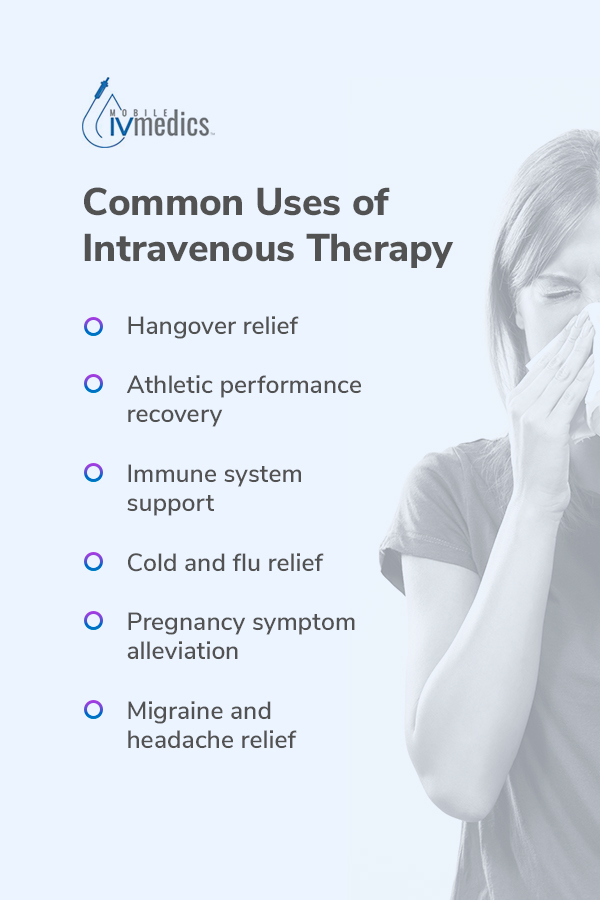
How Long Do IV Treatments Take and How Long Do the Effects Last?
IV hydration therapy drips amino acids, vitamins, minerals, and fluids at a controlled rate. Once you are connected to the first IV line, which is usually a quick and simple process, the duration of the therapy will depend on why you are undergoing mobile IV treatment. The average IV session for us lasts 45 minutes to an hour.
How quickly will you feel the effects of the IV drip?
Again, the answer depends on what you are feeling or ailing from. In some cases, you may feel the effects almost immediately as the IV fluid mixes with your blood vessels. For instance, our Hydration Package refreshes and energizes as soon as the fluid reaches your bloodstream. In other cases, it may take more time for intravenous therapy to work.

Who Can Administer an IV?
IV treatment comes from a licensed and registered nurse (RN) who has completed an accredited nursing program. Some receive additional infusion therapy certification through the Certified Registered Nurse Infusion (CRNI) program. These nurses have standard RN licensure plus at least 1,600 hours of infusion therapy experience over the past two years.
Mobile IV Medics has a team of more than 20 RNs stationed in areas around the United States like southern California, Florida, Texas, Georgia, and more. We are a team of healthcare professionals who are highly trained and take pride in helping others feel better through IV injections.
Where to Get an IV
IV therapy is provided in a number of different settings, including:
- Hospitals: Many patients at hospitals undergo some type of IV, typically in addition to some other kind of treatment in this medical setting. People treated with an IV at a hospital are either there for an emergency, as an inpatient, or for critically ill patients. Hospitals will also use intravenous administration to deliver medications as an alternative to swallowing pills or further injections.
- Urgent care centers: Urgent care centers can handle some minor emergencies. For example, if you need stitches, you may opt to go to an urgent care center instead of a hospital emergency room. Urgent care centers are typically less expensive than hospitals. Depending on the reason for your visit, you may receive an IV at an urgent care center.
- Medical spas: Medical spas offer a wide array of treatments to choose from, ranging from traditional spa options like a massage to medical treatments like IV hydration therapy. As a mix between a spa and a medical clinic, the staff is also a mix of non-healthcare and healthcare professionals. If you undergo an IV drip, a healthcare professional should administer the treatment.
- IV bars: IV bars or lounges offer different IV therapies. These treatment sites are sometimes in a fixed location, while others operate as mobile units.
- At home: Concierge services, like Mobile IV Medics, come to you. Instead of traveling to another location, you can undergo IV hydration therapy in the comfort of your own home. If you are located in Southern California, Texas, Nevada, Georgia, Illinois, or Florida, we likely service your area.
What Does It Cost To Undergo IV Therapy?
IV therapy ranges in cost, depending on the type of therapy and the provider. IV therapy is not typically covered by insurance, which means patients are responsible for the cost.
At Mobile IV Clinics, our packages start at $199 (the hydration package), but we have other packages targeted for specific symptoms such as a migraine or hangovers.
The cost of each of our packages covers the IV drip, the registered nurse, and our travel. You can also opt to customize your mobile IV for your specific symptoms.
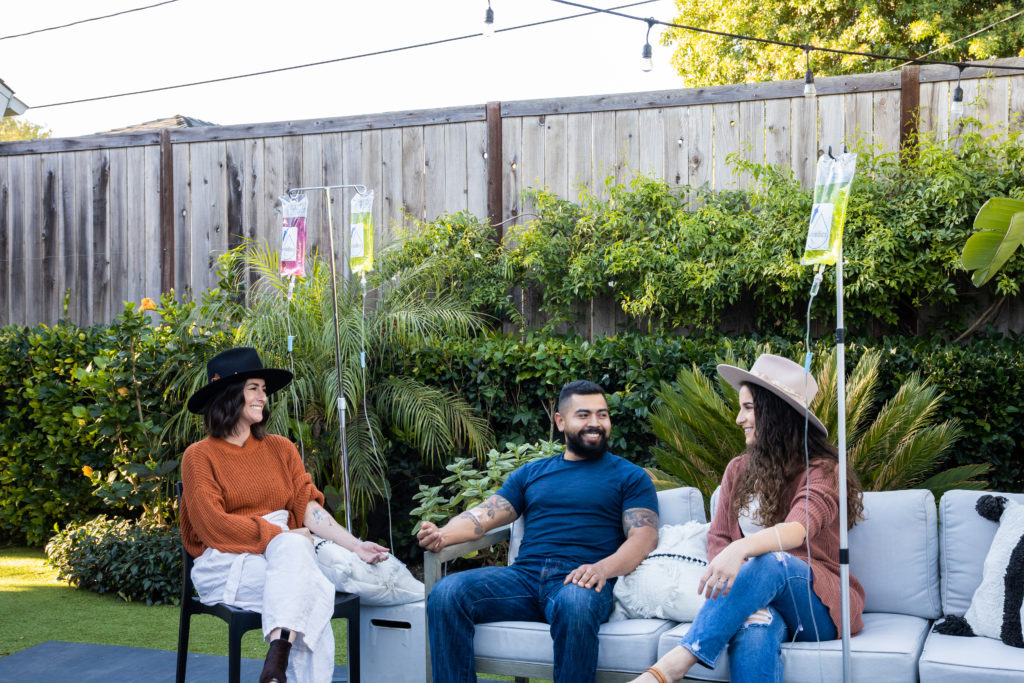
When you decide to customize your therapy, each vitamin and nutrient starts at $20 with the exception of a few hydration therapy add-ins. We also offer discounts for large groups of patients. The cost of our IV therapy options is comparable to what a patient would owe for an emergency room visit co-pay.
What to Expect From an At-Home IV Therapy Session
Our IV therapy sessions are quick, comfortable experiences. You’ll start by booking your appointment online, where you can schedule an appointment as soon as the same day.
Your Mobile IV Medics nurse will arrive at your home and sanitize the surfaces where you’ll have treatment. Your nurse will also collect information regarding your medical history and conduct a physical assessment.
When you’re ready, your nurse will tie a flexible band around your upper arm to contain blood at the injection site. Then, they’ll gently administer the first IV injection. From there, you can relax while IV fluid drips from the IV bag into your bloodstream. After treatment, you can go about your day.
Getting Started
If IV therapy sounds like a good fit for you, we are here to provide our concierge services for receiving treatment.
Our trained team of nurses will come to your home or office to administer for individuals and groups. Reach out to us to learn more about how we can help, or book your IV therapy online.


Sources:
- https://www.stick-to-safety.com/news/newsroom/detail///iv-cannulation-procedure-for-nurses/
- https://hiv.rutgers.edu/wp-content/uploads/2016/05/Finding-the-Vein-Fact-Sheet-HRC.pdf
- https://www.urmc.rochester.edu/encyclopedia/content.aspx?contenttypeid=19&contentid=BComplex
- https://www.ncbi.nlm.nih.gov/pmc/articles/PMC5707683/
- https://www.ncbi.nlm.nih.gov/books/NBK557463/
- https://www.ncbi.nlm.nih.gov/books/NBK279022/
- https://parathyroiduk.org/living-with-hypopara/self-help-guide/how-to-manage-your-calcium-levels-practical-steps/
- https://www.aafp.org/afp/2009/0715/p157.html
- https://idatb.com/antibiotic-infusion-therapy/
- https://www.mayoclinic.org/diseases-conditions/morning-sickness/symptoms-causes/syc-20375254
- https://www.next-health.com/blogs/news/how-long-do-iv-fluids-stay-in-body
